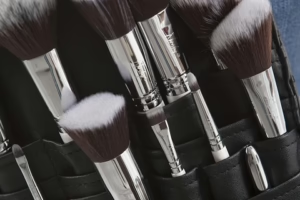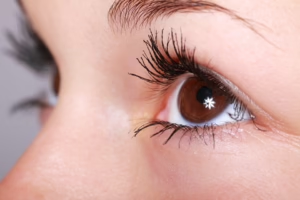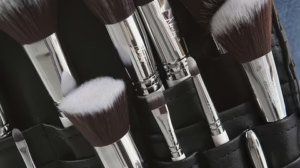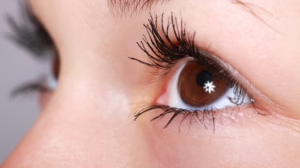How to Avoid Common Mistakes When Removing Makeup
Makeup can enhance beauty and boost confidence, but it’s equally important to recognize the critical role of proper removal. Failing to effectively remove makeup can lead to various skin issues, including breakouts, clogged pores, and irritation. Here, we will explore how to avoid common mistakes when removing makeup, ensuring your skin remains healthy and radiant.
Understanding Your Skin Type
Before diving into makeup removal methods, it’s essential to understand your skin type. This knowledge will influence the products and techniques you choose for makeup removal.
Oily Skin
Oily skin tends to produce excess sebum, making it more prone to breakouts. For this skin type, opt for oil-free, foaming cleansers that can effectively remove makeup without adding excess oil.
Dry Skin
If you have dry skin, choosing a creamy or hydrating cleanser is vital. Cleansing oils or milk-based cleansers can gently remove makeup while moisturizing the skin.
Combination Skin
Combination skin requires a balanced approach. A gentle cleansing gel or foam can help maintain the skin’s hydration while effectively removing makeup.
Sensitive Skin
People with sensitive skin should select fragrance-free, hypoallergenic products designed for their skin type. Look for soothing ingredients like aloe vera or chamomile.
Common Makeup Removal Mistakes and How to Avoid Them
1. Skipping Double Cleansing
One of the biggest mistakes in makeup removal is skipping the double cleansing process. Double cleansing involves two steps: the first step usually includes an oil-based cleanser that dissolves makeup, while the second is a water-based cleanser that removes impurities and excess oil.
Tip: Always start with an oil-based cleanser to break down makeup and follow with a gentle foam or gel cleanser to cleanse your skin thoroughly.
2. Using Inappropriate Products
Using the wrong products can lead to irritation, dryness, or allergic reactions. For instance, facial wipes can be convenient but often contain alcohol, which can dry out the skin.
Tip: Choose specific makeup removers that suit your skin type, such as micellar water, cleansing oils, or balms. Micellar water, for example, is gentle on the skin and effective for light to moderate makeup.
3. Rubbing Too Hard
Vigorously rubbing your face can irritate the skin and lead to inflammation or even micro-tears. This is particularly true for the delicate skin around the eyes.
Tip: Use gentle, circular motions to cleanse your face. For the eye area, use a cotton pad soaked in makeup remover and press it gently against your eyelids for a few seconds before wiping away.
4. Not Removing Makeup Before Bed
Going to bed with makeup on is a common mistake that can have severe consequences on skin health. It prevents the skin from breathing and can lead to clogged pores and breakouts.
Tip: Establish a nighttime routine that includes makeup removal as an essential step, making it a non-negotiable part of your self-care.
5. Forgetting the Neck and Ears
When removing makeup, the focus tends to be solely on the face, neglecting the neck and areas behind the ears where products can accumulate.
Tip: Extend your cleansing routine to your neck and behind your ears, ensuring that all makeup is removed thoroughly.
6. Neglecting Eye Makeup
Eye makeup, especially long-lasting formulas, requires special attention. Not removing eye makeup can lead to potential irritations and even infections.
Tip: Use an oil-based eye makeup remover specifically designed for the eye area. Always remove mascara and eyeliner carefully, as pulling on the delicate skin can cause wrinkles.
7. Not Paying Attention to Expiration Dates
Using expired makeup removers or skincare products can worsen skin issues. These products may lose efficacy over time or develop bacteria that can irritate the skin.
Tip: Regularly check the expiration dates on your makeup removal products and replace them as necessary.
8. Skipping Moisturization After Cleansing
Many people make the mistake of neglecting the skin’s need for hydration after cleansing. Removing makeup without following up with a moisturizer can leave the skin feeling tight and dry.
Tip: Always apply a moisturizer or hydrating serum after cleansing to restore moisture and maintain your skin’s barrier.
9. Overusing Exfoliation
Some individuals may think that over-exfoliating their skin will ensure thorough makeup removal; however, this can disrupt the skin barrier and cause irritation or breakouts.
Tip: Limit exfoliation to 1-2 times a week, depending on your skin type, and wait until after your regular cleansing routine to exfoliate.
10. Neglecting to Hydrate Throughout the Day
Hydration plays a crucial role in maintaining skin health. Neglecting to drink enough water and failing to use hydrating products can lead to dull skin.
Tip: Stay hydrated by drinking sufficient water and consider using hydrating mists or serums throughout the day.
Techniques for Effective Makeup Removal
Oil-Based Cleansers
Oil-based cleansers effectively break down even the most stubborn makeup, such as waterproof mascara and long-lasting foundation. They work well for all skin types, and their emulsifying properties help cleanse without stripping the skin’s natural oils.
Micellar Water
Micellar water has become increasingly popular due to its effectiveness and gentleness. It contains tiny micelles that attract and lift away dirt and makeup from the skin without the need for harsh rubbing.
Cleansing Balms and Oils
Cleansing balms and oils are perfect for a luxurious makeup removal experience. They dissolve makeup effectively while also providing hydration, making them an excellent choice for dry skin.
Gentle Exfoliating Cleansers
In conjunction with standard cleansing products, incorporating a gentle exfoliating cleanser can aid in ensuring deep cleansing, especially for those who wear heavier makeup. However, remember not to use them daily to avoid irritation.
Creating a Custom Makeup Removal Routine
Step 1: Gather Your Products
Assemble the necessary products for proper makeup removal, including:
- Oil-based cleanser or cleansing balm
- Gentle foaming or gel cleanser
- Cotton pads or soft cloths
- Eye makeup remover (if separate)
Step 2: Start with Your Eyes
Begin by removing eye makeup, as it usually requires a bit more effort. Soak a cotton pad with eye makeup remover and press it gently against your eyelids for a few seconds before wiping away.
Step 3: Use an Oil-Based Cleanser
Apply the oil-based cleanser to dry skin. Massage it gently with circular motions, focusing on areas with heavy makeup. Rinse with warm water or use a damp cloth to remove the cleanser.
Step 4: Follow with a Water-Based Cleanser
Apply your water-based cleanser to remove any residual oil and impurities. Rinse thoroughly to ensure all traces of makeup are gone.
Step 5: Pat Dry and Moisturize
Gently pat your face dry with a clean towel and immediately follow with a moisturizer or hydrating serum to lock in moisture.
Conclusion
Properly removing makeup is a critical step in any skincare routine. By avoiding common mistakes and adopting effective techniques, you can help ensure that your skin remains healthy, vibrant, and free from blemishes. With the right knowledge and products, you can enjoy the benefits of makeup without sacrificing skin health.
Remember to adjust your routine based on your specific skin type and needs, and always listen to your skin’s signals. Embrace this essential self-care practice, and your skin will thank you!
References
[1] Modern Beauty Insights. (2023). The Importance of Double Cleansing. Retrieved from Modern Beauty Insights[2] Healthy Skin Guide. (2023). Understanding Your Skin Type. Retrieved from Healthy Skin Guide
[3] Skincare Authority. (2023). How to Properly Remove Eye Makeup. Retrieved from Skincare Authority
[4] Clean Beauty Essentials. (2023). The Best Products for Makeup Removal. Retrieved from Clean Beauty Essentials
[5] Hydration Hub. (2023). The Importance of Hydration for Healthy Skin. Retrieved from Hydration Hub
This comprehensive article provides essential insights into avoiding common mistakes when removing makeup and offers guidance on establishing a routine tailored to your skin type. By following these tips, you can ensure your makeup removal process is both effective and gentle, contributing to healthier skin.


























Add Comment